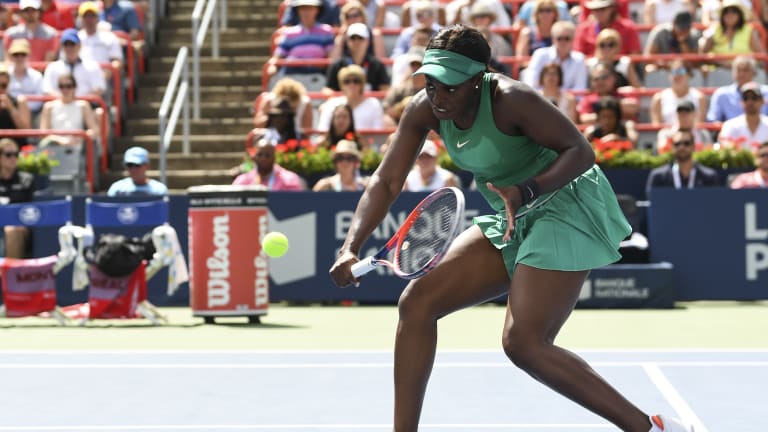Those rallies weren’t a surprise, but at times the resilience of both players was. As the first set lengthened into a mini-epic, it seemed that whoever lost it was likely to lose the second set as well. Instead, Stephens bounced right back, broke early, and leveled the match. Then, early in the third set, it was Halep’s turn to appear as if she were on her last legs. She had a blister, she was doubled over and gasping after each point, and she could only stand and watch as Stephens fired forehand winners past her. When Sloane went up 40-15 at 2-2, it seemed like a lock that she would begin to pull away. Instead, it was Halep who came back to break, hold serve, and break again for 5-2.
Stephens had one more comeback in her, and she made it dramatic at the end—that was only logical on a day when so little separated these two finalists. But Sloane lost this match for the same reason she lost the French Open final to Halep. In Paris, Stephens led by a set and a break, and then froze when the finish line came into view. In Montreal, the shift wasn’t as drastic, but it happened at a similar stage of the match. Just when Sloane looked poised to take the lead for good early in the third set, she didn’t.
If their rivalry builds, Stephens will learn to believe she can beat Halep in these types of matches. For this season, though, the Romanian was a little steadier with her shots, and that steadiness gave her a little more confidence that she could outlast Stephens down the stretch.
Still, this match wasn’t about who was better or who was worse. It was about the quality and drama of the contest itself, which were among the best that tennis had to offer in 2018.
"Both matches were crazy good,” Halep said of this final and the French Open final.
Is it just me, or did she sound a little like Sloane there?

